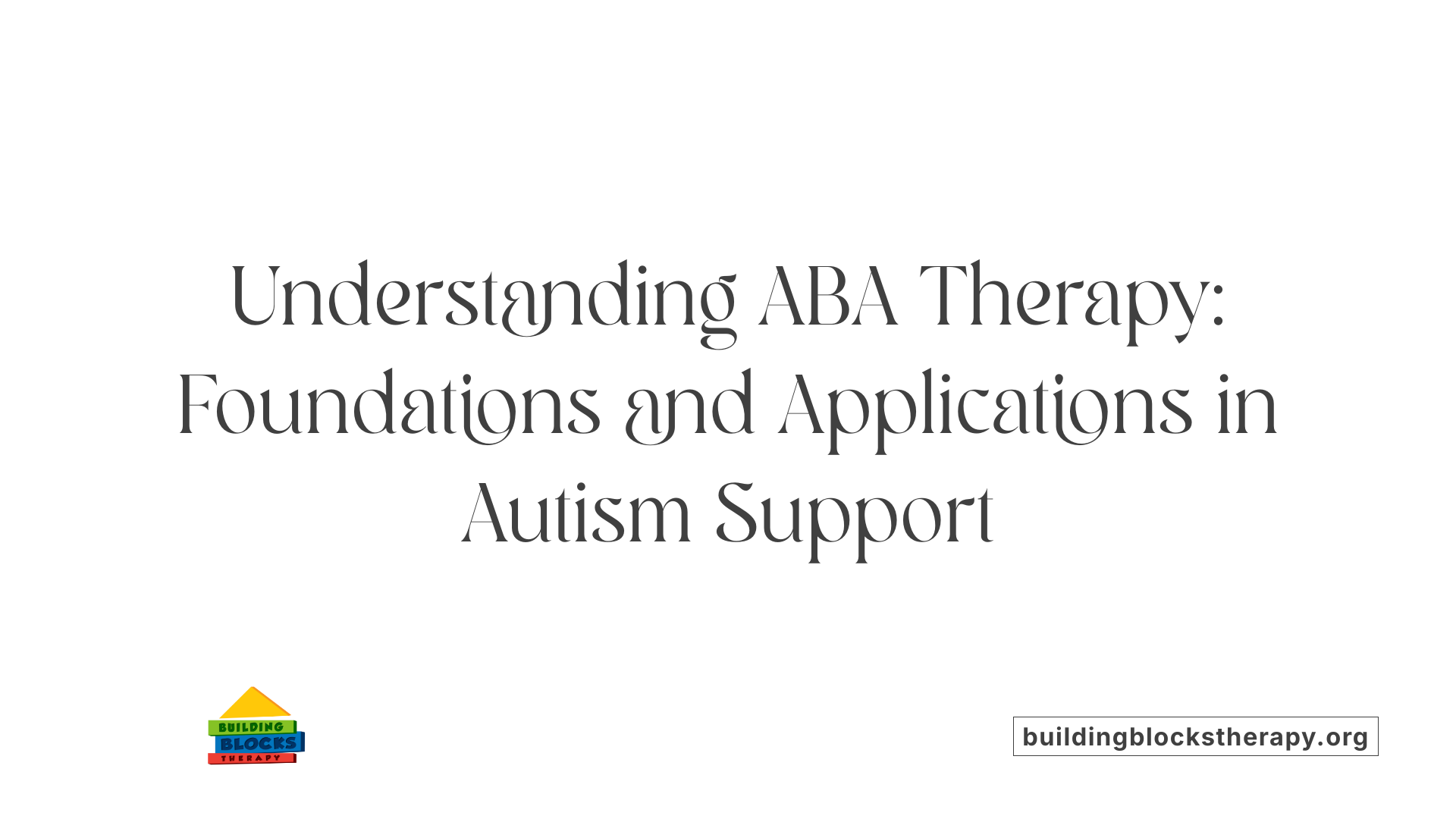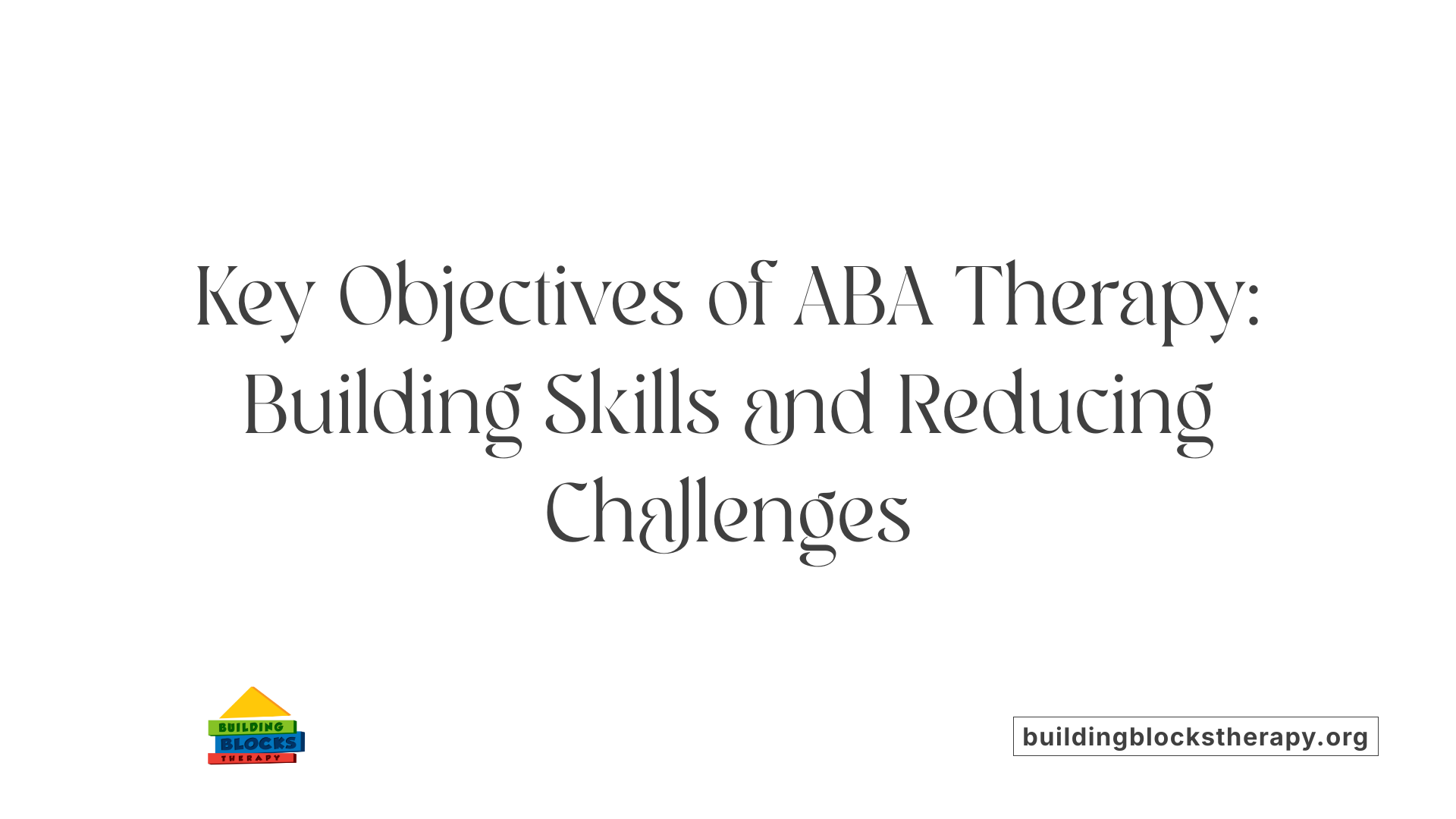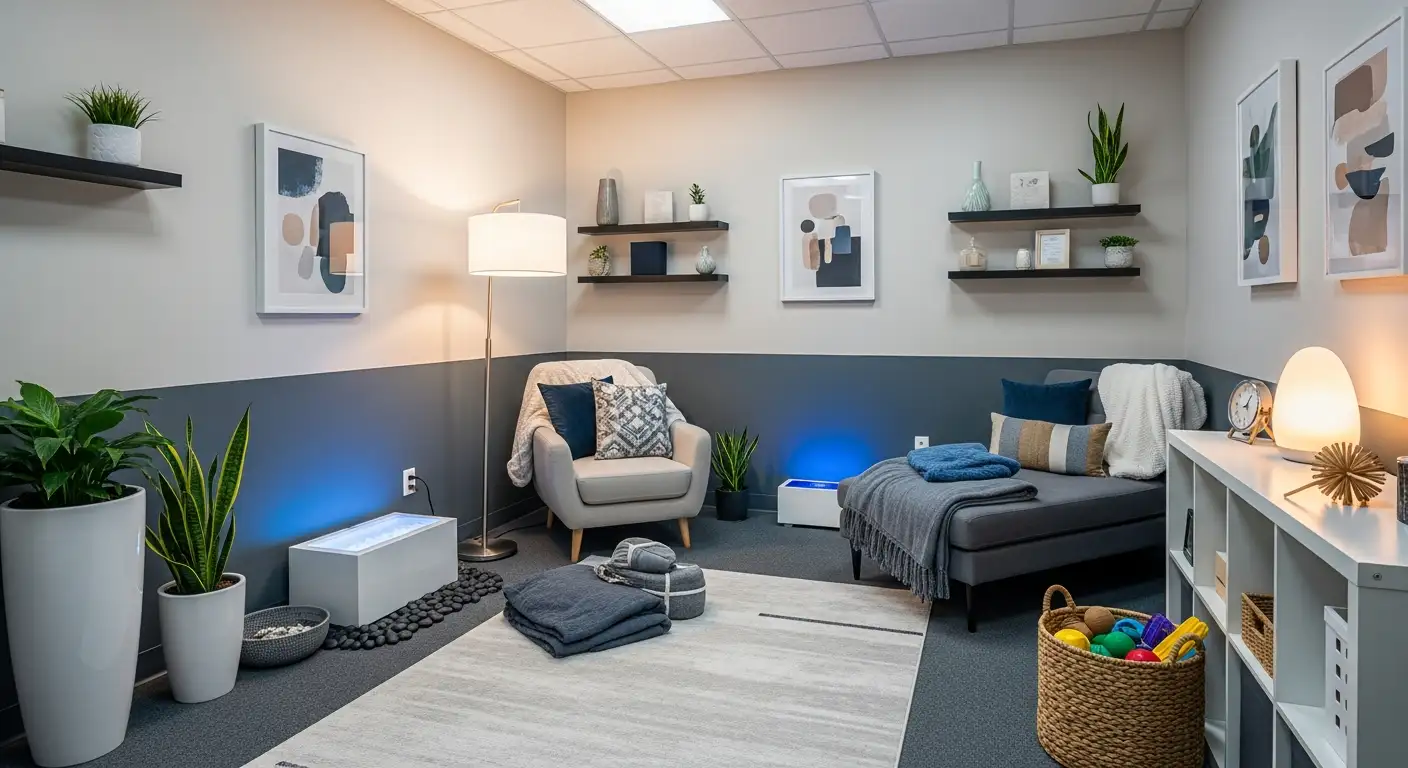Understanding ABA and Visual Supports
Applied Behavior Analysis (ABA) therapy stands as a scientifically supported approach to helping individuals with autism spectrum disorder (ASD) develop crucial life skills and reduce challenging behaviors. Visual supports, an essential component within ABA therapy, provide structure, predictability, and communication cues, dramatically enhancing therapy outcomes. This article explores how visual supports function within ABA, their types, usage environments, and their pivotal role in fostering independence and positive behavioral change for individuals with ASD.
What is ABA Therapy and Its Role in Autism Support?

What is Applied Behavior Analysis (ABA) therapy and how is it used to support individuals with autism?
Applied Behavior Analysis (ABA) therapy is a scientific approach that focuses on understanding and improving behavior through learning principles. It is widely used to support individuals with autism by encouraging positive behaviors such as communication, social skills, and daily living abilities, while reducing challenging or interfering behaviors.
ABA therapy works by carefully analyzing behaviors and their environmental triggers and applying positive reinforcement to encourage desired actions. This approach is highly individualized — treatment plans are tailored after detailed assessments and continuously adjusted based on progress monitoring.
Common ABA methodologies include:
- Discrete Trial Training (DTT): Structured, step-by-step teaching sessions that reward correct responses.
- Pivotal Response Training (PRT): Naturalistic techniques focusing on improving critical skills like communication and motivation.
- Early Start Denver Model (ESDM): An early intervention combining ABA principles with developmental strategies for young children.
Research over the past several decades strongly supports ABA therapy’s effectiveness. Early and intensive ABA treatments are associated with significant improvements in cognition, language, social behavior, and independence for children with autism spectrum disorder (ASD). It remains the most evidence-based and widely endorsed behavioral intervention for autism, with ongoing advancements enhancing personalization and ethical practice.
Primary Goals of ABA Therapy for Autism

What are the primary goals of ABA therapy for individuals with autism?
ABA therapy focuses on increasing important behaviors like communication, social skills, and daily living skills in individuals with autism. At the same time, it works to decrease harmful or interfering behaviors that may hinder learning and quality of life.
This therapy uses positive reinforcement and systematic techniques such as prompting and modeling. These methods are personalized to suit each individual's unique needs, ensuring that interventions are both effective and respectful.
A central aspect of ABA is understanding how the environment influences behavior. Qualified behavior analysts conduct thorough assessments and collect data to make informed decisions.
Another key aim is to help skills generalize across settings—whether at home, school, or in the community—so the individual can use learned skills confidently in different environments.
Overall, ABA therapy aims to improve independence, safety, and participation in community life, enabling individuals with autism to lead fuller, more engaged lives.
Who Provides ABA Therapy and Their Qualifications

Roles of Board Certified Behavior Analysts (BCBAs)
Board Certified Behavior Analysts (BCBAs) are the primary professionals who provide ABA therapy. They hold advanced degrees in psychology, education, or related fields and have specialized training in behavior analysis. BCBAs oversee the development of personalized treatment plans based on thorough assessments and are responsible for supervising therapy sessions.
Role of Registered Behavior Technicians (RBTs)
Registered Behavior Technicians (RBTs) typically deliver the direct ABA therapy sessions. Usually holding a high school diploma, RBTs receive specific training in ABA methods and work under BCBA supervision to implement intervention plans, track progress, and report outcomes.
Educational Requirements and Certification Process
To become a BCBA, candidates must complete rigorous coursework in ABA principles, accumulate supervised clinical experience, and pass a certification examination administered by the Behavior Analyst Certification Board (BACB). RBTs also complete targeted training and a competency assessment before certification.
Supervision and Ethical Standards
ABA therapy providers operate under strict ethical guidelines to ensure the quality and dignity of care. BCBAs provide ongoing supervision of RBTs and therapy implementation, promoting evidence-based, ethical treatment practices.
Ongoing Training and Credential Maintenance
Both BCBAs and RBTs are required to engage in continuing education to maintain their certifications. This ongoing training keeps practitioners up-to-date with evolving best practices and ethical standards in ABA therapy.
The collaborative work of BCBAs and RBTs, supported by comprehensive education, ethical oversight, and continual learning, ensures effective and compassionate ABA therapy for individuals with autism and developmental needs.
Visual Supports: Definition and Key Types in ABA Therapy

What Are Visual Supports in ABA Therapy?
Visual supports are simple yet effective tools used in Applied Behavior Analysis (ABA) therapy to help children with autism and other developmental needs better understand their daily routines, tasks, and social expectations. These aids use pictures, words, symbols, or objects to provide clear structure and guide communication, thus reducing anxiety and promoting independence.
Common Types of Visual Supports
Visual supports come in various formats to meet different needs, including:
- Visual Schedules: These outline sequences of activities or tasks, using images or words. They can be organized by daily routines or specific activities, often featuring checkboxes or estimated times to track progress.
- Social Stories: These use a combination of words and pictures to explain social situations, routines, and expected behavior, helping children better understand and navigate social interactions.
- Token Boards: Visual tools that provide positive reinforcement by allowing children to earn tokens for completing tasks or displaying desired behaviors, enhancing motivation and a sense of control.
- Visual Timers: Devices or cards that show how much time remains for a task or activity, making transitions smoother and less stressful.
- First-Then Boards: These clarify what activity or task needs to happen first and what comes next, providing predictability and reducing uncertainty.
How Visual Supports Promote Understanding and Routine
By visually representing daily activities and expectations, these supports give children with autism a clear sense of order and predictability. For instance, a visual schedule can lay out the day's events, reducing stress related to unexpected changes. Social stories prepare children for upcoming social scenarios by explaining what to expect and how to behave. Token boards and first-then boards encourage positive behaviors through immediate recognition and clear expectations.
Examples and Practical Use
Imagine a child who struggles with transitions between activities. A visual timer showing when the current activity will end can decrease anxiety and improve compliance. Or, when teaching hand-washing, a visual schedule can break down the task into steps, helping the child understand and independently follow the routine. These visual tools are versatile and can be effectively used at home, in school, therapy sessions, and community settings to support learning and independence.
How Visual Supports Enhance ABA Therapy Outcomes
Enhancement of communication and behavior
Visual supports in ABA therapy serve as powerful tools to boost communication and promote positive behavior in children with autism. By providing clear cues and structured information through schedules, social stories, and token boards, these aids make expectations clear and facilitate understanding. This structure helps children navigate their day more effectively and encourages desired behaviors by making routines and tasks more understandable.
Reduction of anxiety and stress through predictability
One of the greatest benefits of visual supports is their ability to reduce anxiety and stress by introducing predictability. Visual schedules, for example, outline the sequence of daily activities, easing transitions and minimizing uncertainty. Similarly, first-then boards clarify what needs to happen before a preferred activity, reducing frustration and resistance.
Use across various environments (home, school, therapy, community)
Visual supports are versatile and effective across multiple settings, including the home, school, therapy sessions, community outings, and travel. Their consistent use in these environments helps children anticipate what will happen next, fostering smoother transitions and maintaining behavioral expectations regardless of location.
Improving independence and task completion
By breaking down routines into manageable steps using tools like task analyses alongside visual aids, children can gradually gain greater autonomy. Checklists and progress tracking features within visual schedules help children monitor their own achievements, boosting confidence and encouraging independent task completion.
Consistency across caregivers and teachers to generalize skills
The success of visual supports is maximized when all caregivers, teachers, and therapists use them consistently. This unified approach helps reinforce learning, enabling children to generalize skills across contexts and people rather than limiting progress to one setting or individual. Coordinated efforts ensure that the benefits of ABA therapy are sustained and strengthened over time.
Task Analysis and Its Integration With Visual Supports
What is Task Analysis in ABA?
Task analysis is a technique used in Applied Behavior Analysis (ABA) that involves breaking down complex skills or tasks into smaller, manageable steps. This helps individuals with autism and other developmental needs learn skills more effectively by addressing each component part sequentially.
How Are Complex Skills Broken Down?
Complex tasks like dressing, handwashing, or even tolerating new environments are divided into clear, operationally defined steps. This makes it easier for learners to understand and complete tasks without confusion or frustration. For example, putting on a coat may be broken down into steps such as "take coat off hanger," "put one arm in sleeve," and "zip coat up."
How Are Visual Supports Used?
Visual aids play a crucial role in representing these task steps. Picture cards, schedules, or checklists can visually illustrate each stage of the task analysis, providing structure and clarity. This supports learners by reducing anxiety, improving understanding, and promoting independence.
How Is Task Analysis Personalized?
When developing a task analysis, individual factors such as the person's age, communication ability, and prior experience are carefully considered. Each step is defined to avoid literal misunderstandings and to match the learner's unique needs, ensuring the approach is truly personalized.
What Are Some Examples of Tasks and Uses?
Examples include daily living skills like dressing and handwashing, chores, and school routines. Task analysis is also used in desensitization programs for situations like haircuts or managing loud noises, helping individuals gradually tolerate and adapt to these experiences.
This integration of task analysis with visual supports ensures that ABA interventions are accessible, structured, and meaningful, fostering skill acquisition and independence.
Evidence Supporting ABA Therapy and Role of Visual Supports
What evidence supports the effectiveness of ABA therapy for autism?
Numerous studies and meta-analyses have validated ABA therapy as an effective intervention for individuals with autism spectrum disorder (ASD). ABA-based programs like Early Start Denver Model (ESDM), Picture Exchange Communication System (PECS), Discrete Trial Training (DTT), and Pivotal Response Training (PRT) have shown significant improvements in communication and social skill development.
How does ABA therapy improve communication, social skills, and daily living?
ABA therapy encourages desired behaviors through reinforcement, leading to gains in verbal communication, social interactions, and adaptive daily living skills such as dressing and self-care. While daily living skills improvements tend to be more modest, consistent ABA interventions over time promote increased independence.
What research supports the use of visual supports in ABA?
Visual supports like schedules, token boards, and social stories enhance structure and communication for children with ASD. Research indicates that these tools reduce anxiety, support transitions, and foster positive behavior by making expectations clear. Their effectiveness is heightened when used consistently by caregivers and educators across settings.
Why is data collection and progress monitoring emphasized in ABA?
ABA therapy relies heavily on systematic data collection to measure behavior changes and skill acquisition accurately. Progress monitoring enables professionals to adjust strategies, ensuring interventions are tailored and effective.
How is ABA therapy evolving through ongoing research?
The field of ABA continues to advance with new methodologies, ethical considerations, and technology integration. Personalized treatment plans focusing on dignity and individual needs aim to improve accessibility and outcomes for those with autism. Research continues to refine approaches to core ASD symptoms and optimize intervention effectiveness.
How ABA Therapy Differs From Other Autism Interventions
How does ABA therapy differ from other autism interventions?
Applied Behavior Analysis (ABA) therapy stands out due to its scientific, data-driven approach. Unlike interventions that might focus predominantly on developmental milestones or sensory experiences, ABA relies on measurable data and systematic tracking to customize and adjust treatment plans. This ensures each individual receives personalized goals tailored to their unique needs.
ABA employs structured reinforcement techniques to encourage positive behaviors while reducing challenges. Methods such as Discrete Trial Training (DTT) and Pivotal Response Training (PRT) enable step-by-step skill acquisition and naturalistic learning. These techniques focus on teaching functional skills including communication, social interactions, and daily living tasks.
Visual supports like schedules, token boards, and social stories are integrated within ABA to provide clarity and reduce anxiety, thereby facilitating smoother transitions and better understanding. Such supports are used consistently across therapy, school, and home settings to promote generalization of skills.
Family involvement is a cornerstone of ABA therapy. Caregivers and educators are trained to apply techniques in multiple environments, reinforcing learning and encouraging skill maintenance. This collaborative approach ensures that gains made during sessions translate into everyday life, enhancing independence.
Overall, ABA’s evidence-based, flexible, and goal-oriented framework differentiates it from other autism interventions by prioritizing measurable progress, personalized skill-building, and consistent support across contexts.
Best Practices for Implementing Visual Supports within ABA Therapy
Consistency across caregivers and settings
Consistency is essential when using visual supports in ABA therapy. Ensuring that caregivers, teachers, and therapists utilize the same visual aids helps children with autism generalize skills across environments like home, school, and community outings. This uniformity reduces confusion and strengthens learning outcomes.
Ensuring individualized visual supports based on needs
Visual supports should be tailored to each child's unique abilities, communication skills, and preferences. Personalized tools—such as visual schedules with pictures, social stories, or token boards—help meet specific developmental needs and make routines and expectations easier to understand.
Monitoring fidelity of implementation
Using fidelity checklists and data collection is crucial to ensure visual supports are implemented as designed. This practice guarantees that supports maintain their effectiveness and that any modifications are made thoughtfully to enhance engagement and learning.
Integrating visual supports with other ABA techniques
Visual supports work best when combined with a variety of ABA methods. For example, pairing visual schedules with discrete trial training (DTT) or pivotal response training (PRT) can reinforce desired behaviors and help children acquire pivotal skills like communication and social interaction.
Involving families to reinforce skills at home
Family involvement strengthens the impact of visual supports. Training and coaching parents to use these tools consistently at home promote skill generalization and provide children with a supportive, structured environment beyond therapy sessions.
Visual Supports: A Vital Component of ABA Therapy Success
Visual supports play a crucial role within ABA therapy by providing the structure, clarity, and communication tools essential for individuals with autism to navigate their daily lives with greater independence and reduced anxiety. Embedded within an evidence-based, individualized ABA framework and delivered by trained professionals, these visual aids extend the benefits of therapy beyond clinical settings to homes, schools, and communities. Consistent implementation, ongoing progress monitoring, and family involvement optimize outcomes. As ABA therapy continues to evolve, the integration of visual supports remains a cornerstone in helping individuals with autism build meaningful skills, fostering improved quality of life and greater participation in society.
References
- ABA Visuals & Its Importance
- Treatment and Intervention for Autism Spectrum Disorder
- 5 Visual Support Examples for Behavior
- 7 Best Applied Behavior Analysis Books
- The Role of Task Analysis and Chaining: Articles: Indiana ...
- Page 2: Evidence-Based Practices - IRIS Center
- Exploring the Importance of ABA Therapy for Autism
- Applied Behavior Analysis (ABA)






